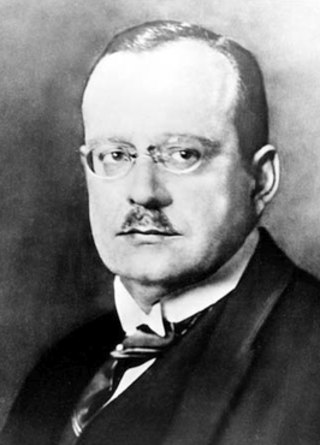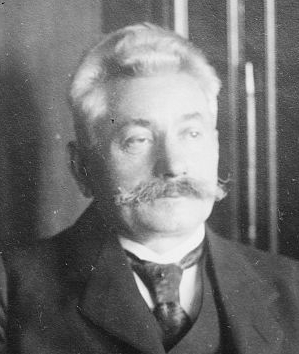
The Friedrichsfelde Central Cemetery is a cemetery in the borough of Lichtenberg in Berlin. It was the cemetery used for many of Berlin's Socialists, Communists, and anti-fascist fighters.

Pankow is the second largest area of Berlin by population. In Berlin's 2001 administrative reform, it was merged with the former boroughs of Prenzlauer Berg and Weißensee; the resulting borough retained the name Pankow. Pankow was sometimes claimed by the Western Allies to be the capital of the German Democratic Republic, while the German Democratic Republic itself considered East Berlin to be its capital.

Wilhelm Leuschner was a trade unionist and Social Democratic politician. An early opponent of Nazism, he organized underground resistance in the labour movement. As a result of their involvement in the assassination attempt on Hitler in 1944, Leuschner was executed.

Paul Adolf Franz Lejeune-Jung, was a German economist, politician, lawyer in the wood pulp industry, and resistance fighter against Adolf Hitler's Third Reich.

Ludwig Schwamb was a social-democratic jurist and politician who fought against the Nazi dictatorship in Germany as a member of the Kreisau Circle motivated by his Christian beliefs, and as a close colleague of Wilhelm Leuschner, which led to his execution as a resistance fighter.
Trade unions in Germany have a history reaching back to the German revolution in 1848, and still play an important role in the German economy and society.

Karl Friedrich Lessing, also known by Carl Friedrich Lessing, was a German historical and landscape painter, grandnephew of Gotthold Ephraim Lessing and one of the main exponents of the Düsseldorf school of painting.
The International Secretariat of National Trade Union Centres (ISNTUC), often simply referred to as the International Secretariat and later renamed the International Federation of Trade Unions (IFTU), was an international consultative body of trade unions. Founded in 1901, it broke apart and became defunct during the First World War.

Berlin is a sculpture on the Tauentzienstraße in Berlin, the capital of Germany. First conceived in 1985 and unveiled by the husband-and-wife sculpting team of Brigitte Matschinsky-Denninghoff and Martin Matschinsky in 1987, the sculpture's principal motif, a "broken chain", was meant to symbolize the severed connections between West and East Berlin due to the construction of the Berlin Wall. After the Wall was dismantled, the sculpture was bought by the city from Matschinsky-Denninghoff to commemorate this period in German history.

Carl Legien was a German unionist, moderate Social Democratic politician and first President of the International Federation of Trade Unions.
The General German Trade Union Federation was a confederation of German trade unions in Germany founded during the Weimar Republic. It was founded in 1919 and was initially powerful enough to organize a general strike in 1920 against a right-wing coup d'état. After the 1929 Wall Street crash, the ensuing global financial crisis caused widespread unemployment. The ADGB suffered a dramatic loss of membership, both from unemployment and political squabbles. By the time the Nazis seized control of the government, the ADGB's leadership had distanced itself from the Social Democratic Party of Germany (SPD) and was openly cooperating with Nazis in an attempt to keep the organization alive. Nonetheless, on May 2, 1933, the SA and SS stormed the offices of the ADGB and its member trade unions, seized their assets and arrested their leaders, crushing the organization.

Leuschnerdamm is a street in Kreuzberg, Berlin, Germany.

Legiendamm is a street in Berlin, Germany. The street is parallel to Leuschnerdamm and borders an accumulation pond of the former Luisenstadt Canal. It is named after Carl Legien and was previously called as Luisenufer. Notable features include Markthalle VII and a bust of Carl Legien.

A 1959 bust of Carl Legien by Karl Trumpf is installed along Legiendamm in Kreuzberg, Berlin, Germany.
Theodor Leipart was a leading German trades unionist.
Georg Schmidt was a German trade unionist and politician.

Wilhelm "Willi" Agatz was a German trade unionist, politician and resistance fighter of the Communist Party (KPD) who served in the Reichstag before World War II and the Bundestag after.
Albert Baumeister was a German trade unionist and journalist.
The Stinnes–Legien Agreement was an accord concluded by German trade unions and industrialists on 15 November 1918. Named after both parties' negotiators in chief, the heavy industry magnate Hugo Stinnes and the union leader Carl Legien, the agreement enshrined a set of workers' rights long coveted by the German labour movement.













